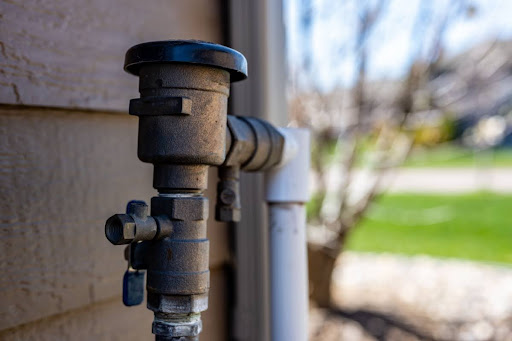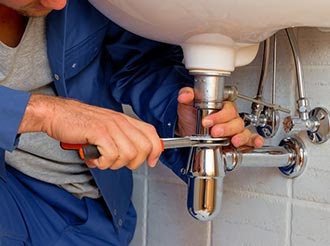
Home maintenance is a fundamental aspect of keeping up with the changing seasons. From prepping for cold winters to enjoying summer's warm evenings, you work hard so your home continues to run like a well-oiled machine. One often overlooked part, however, is plumbing. Specifically, backflow prevention. Many homeowners may not even realize it's an issue until they experience the unfortunate consequences of contaminated water entering their home's supply.
Whether you’ve just heard the term for the first time or you’re looking to brush up on the basics, our S and J Plumbing team is here to break down all you need to know. We're also here to install a backflow prevention device or give your current one an in-depth inspection. Give us a call with any questions or to schedule plumbing, sewer line, or drain service.
Why Backflow Prevention Matters
Backflow occurs when water flows in the opposite direction it should, potentially pulling contaminants like fertilizers, chemicals, or bacteria into your home’s clean water. Imagine using your hose to water the garden, and suddenly, due to pressure changes, water from the ground gets sucked back into the pipes that supply your drinking water. The result? A serious health risk.
Backflow prevention protects your potable water supply from these unwanted contaminants. In fact, many municipalities, including Arlington Heights, require backflow prevention devices in homes, especially for systems connected to an irrigation system or a fire protection system.
How a Backflow Prevention Device Works
You can think of a backflow device as a one-way gate, using valves that close automatically when the water flow reverses, blocking the contaminated water from moving backward into the main supply line. When water pressure drops or reverses due to changes in the system, the device detects the shift and immediately stops any backward movement of water.
These devices come in different types and sizes, with options available for both simple home setups and more complex systems. The type of backflow preventer you need depends on your specific plumbing network.
Types of Backflow Preventers
Choosing the right backflow preventer for a residential property depends on the specific application and level of hazard present. From the simplicity of an air gap to the advanced protection offered by an RPZ assembly, each device has its strengths.
Air Gap
An air gap is the simplest form of backflow prevention. It involves a physical separation between the water supply and any potential contamination source. In residential plumbing, an air gap typically appears as a vertical space between a faucet and the flood level of a sink or tub. The gap prevents water from siphoning back into the home’s plumbing in case of a pressure drop. This method relies solely on gravity and does not involve mechanical parts, making it highly reliable and maintenance-free.
Use Case: Air gaps are commonly seen in kitchen sinks, dishwashers, and washing machines, where the risk of contamination is relatively low.
Atmospheric Vacuum Breaker (AVB)
The atmospheric vacuum breaker (AVB) is a simple and cost-effective device that prevents back-siphonage. It consists of a check valve and an air inlet that opens when the pressure in the supply pipe drops, allowing air to enter and break the vacuum. This prevents contaminated water from being drawn back into the clean water supply. AVBs are installed on individual fixtures rather than the entire plumbing system.
Use Case: AVBs are often used in outdoor irrigation systems, faucets, and hose bibs, where the risk of backflow through siphoning is higher.
Pressure Vacuum Breaker (PVB)
The pressure vacuum breaker (PVB) is a type of backflow preventer that operates similarly to the AVB but with added pressure resistance. It consists of a spring-loaded valve that opens to let air into the system when the pressure falls below a safe level. PVBs are more robust than AVBs and provide protection against back-siphonage but not back pressure.
Use Case: PVBs are frequently used in irrigation systems, such as lawn sprinklers, where the pressure of the water supply might fluctuate.
Double Check Valve Assembly (DCVA)
A double check valve assembly (DCVA) consists of two check valves arranged in series to provide extra protection against backflow. If one valve fails, the other remains functional. This device prevents both back siphonage and back pressure but is less effective for high-hazard situations involving dangerous contaminants. It requires regular maintenance to ensure proper function.
Use Case: DCVAs are installed in situations where there is a moderate risk of contamination, such as homes with fire sprinkler systems or swimming pools.
Reduced Pressure Zone (RPZ) Assembly
The reduced pressure zone (RPZ) assembly is one of the most effective and reliable backflow prevention devices. It includes two check valves, similar to the DCVA, but adds a relief valve between them. The relief valve opens if either check valve fails or if the pressure between them becomes too high, ensuring that any contaminated water is expelled before entering the potable water supply. RPZ assemblies are designed to handle both back-siphonage and back pressure.
Use Case: RPZ assemblies are recommended for high-hazard situations where contaminants could pose a significant health risk. These devices are often installed in homes with irrigation systems that use fertilizers or chemicals, or where a private well is connected to the plumbing system.
Hose Bib Vacuum Breaker
The hose bib vacuum breaker is a compact device that attaches directly to a hose bib or faucet. It functions similarly to the AVB by allowing air to enter when the pressure drops, preventing water from siphoning back into the system. Hose bib vacuum breakers are easy to install and inexpensive.
Use Case: This type of backflow preventer is ideal for garden hoses, outdoor faucets, and any situation where a hose is used to supply water to potentially contaminated areas.
Spill-Resistant Vacuum Breaker (SVB)
A spill-resistant vacuum breaker (SVB) functions like an atmospheric vacuum breaker but with added features to prevent spillage during operation. The SVB includes a check valve that only allows air into the system when necessary, making it more suited for indoor installations or in situations where water spilling from the device could cause damage.
Use Case: SVBs are typically installed in settings where a small amount of leakage could be problematic, such as indoor plumbing fixtures or commercial kitchen sinks.
When You Need Backflow Prevention
While most homes are connected to a public water supply with built-in safety measures, individual properties often need additional protection. If your home features an irrigation system, pool, or any other setup that could introduce contaminants, you likely need a backflow prevention system.
Even simple actions, like using a garden hose with a spray nozzle, can create a backflow risk if you accidentally leave the hose submerged in a puddle or pool. Arlington Heights water system is robust, but it’s also a shared resource, which means keeping your water safe also keeps your neighbors’ water safe.
Why Annual Testing Is Essential
Just like your HVAC system needs a tune-up before winter, your backflow prevention device requires regular testing to ensure it’s working properly. Arlington Heights, like many municipalities, has specific guidelines and regulations that require homeowners to have their backflow devices tested annually. Certified professionals inspect the device to confirm that it functions correctly and protects your water from contamination.
Skipping these tests could result in your system failing when you need it most. If you haven't had your backflow prevention device tested recently, now is the time to schedule an inspection and make sure everything is working as it should.
S and J Plumbing — The Experts on Backflow Prevention Systems
When you need a backflow preventer installed or tested, S and J Plumbing is the only name you need to know. With a team of skilled plumbers who understand the complexities of backflow systems, you’ll experience peace of mind knowing your water supply remains protected. We prioritize quality workmanship and precision with every service. Contact us today to get started!




